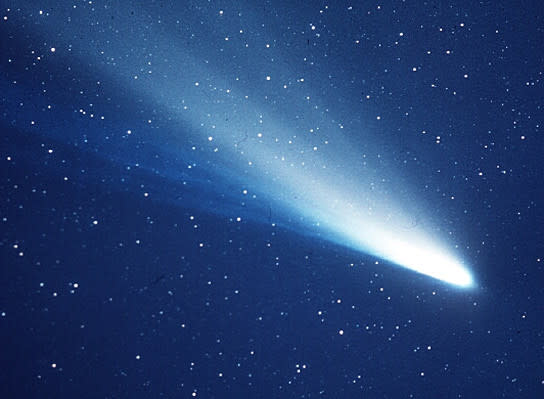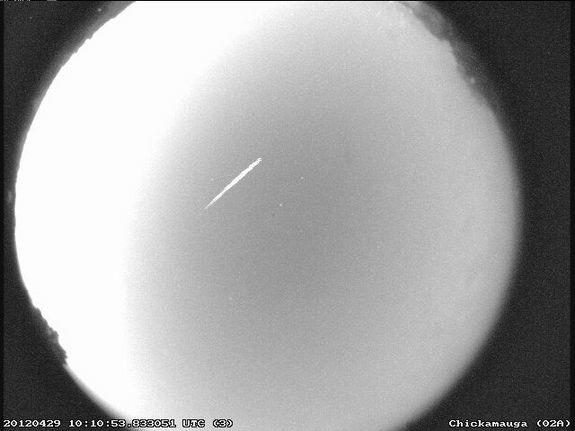Meteor Shower of Halley's Comet Pieces Peaks Sunday: Watch It Live
A meteor shower made from the dusty leftovers of the famed Halley's Comet will be at its best on Sunday (May 5) and NASA doesn't want you to miss it.
The annual Eta Aquarid meteor shower will peak Sunday night and NASA scientists will provide live views of the celestial fireworks display in a webcast from the agency's Marshall Space Flight Center in Huntsville, Ala. The webcast and chat will run from 11 p.m. to 3 a.m. EDT (0100 to 0700 May 6 GMT), NASA officials said.
You can watch the Eta Aquarid webcast live on SPACE.com, courtesy of NASA.
"This year the peak will occur on the night of May 5 about 9 p.m. EDT with meteor rates of about 30-40 meteors per hour near peak. Eta rates will also be good on the evening of May 4," NASA officials said in a statement. "The Etas contain quite a few fireballs. Ideal viewing conditions are clear skies away from city lights, especially just before dawn." [Halley's Comet's Yearly Meteor Attack on Earth (Video)]
Astronomer Bill Cooke, a veteran meteor expert and head of NASA's Meteoroid Environment Office at Marshall Space Flight Center, will answer questions in the online chat during the Eta Aquarid meteor shower webcast. Live camera views of the display will be provided by a light-activated camera mounted outside the center that automatically turns out as evening falls each night.
The Eta Aquarid meteor shower is one of two "shooting stars" displays created by dusty debris from Halley's Comet, which orbits the sun once every 76 years. The comet was last visible from Earth in 1986, but it has left trails of dust across the solar system that, as the Earth passes through them, create the Eta Aquarid meteor shower in early May and the Orionid meteor shower in mid-October.
The Eta Aquarid display is named after the constellation Aquarius because it appears to radiate out from nearby that star pattern. It is known for creating bright fireballs that can dazzle observers. But stargazers should not stare directly at Aquarius while trying to see the meteor shower.
The best way to maximize your chances of seeing a meteor is to find an observing spot far from city lights and look straight up at the night sky, NASA officials said. A blanket, lawn chair or sleeping bag can make things extra comfortable, they added.
Also be sure to allow about 30 minutes for your eyes to adjust to the darkness.
While the Eta Aquarid and Orionid meteor shower give stargazers a chance to see bits Halley's Comet each year, observers will have to wait a while before seeing the actual comet in the night sky. The next time Halley's Comet will swing near Earth will be in 2061.
Editor's note: If you have an amazing picture of any night sky view that you'd like to share for a possible story or image gallery, send photos, comments and your name and location to managing editor Tariq Malik at spacephotos@space.com.
Email Tariq Malik at tmalik@space.com or follow him @tariqjmalik and Google+. Follow us @Spacedotcom, Facebook and Google+. Original article on SPACE.com.
Copyright 2013 SPACE.com, a TechMediaNetwork company. All rights reserved. This material may not be published, broadcast, rewritten or redistributed.



